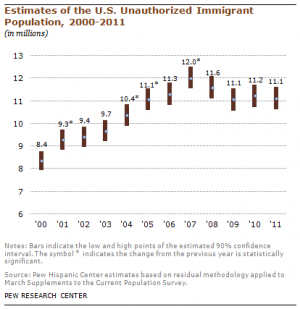
What's the plan for America's 11.1 million undocumented immigrants?
It's the million dollar question, and the most divisive element of the Senate's sprawling new effort to overhaul the country's messy immigration system. After months of painstaking negotiation, a bipartisan group of senators, known as the "Gang of Eight", recently unveiled a proposal to -- among other things -- create a path to citizenship for the millions who live here in the shadows. But legislators have made abundantly clear that this proposal is a far cry from "amnesty". The path they outlined for almost all the undocumented (except for young "DREAMers" who would be on a streamlined 5-year path) is a tedious, decade-plus-long process full of steep hurdles and strict conditions, in which citizenship is a distant destination at the end of a long journey.
Where do the undocumented live?
The following map, produced by the online magazine Slate, uses the most recent Pew Research Center analysis of 2011 data, which includes state-by-state estimates. Slate notes that the data meets the 90-percent confidence interval for population estimates for each state (except for the handful of states where the undocumented immigrant population is so low that it's nearly impossible to confidently estimate).
Many more undocumented immigrants reside in California (topping 2.5 million) and Texas (more than 1.5 million) than any other state, according to Pew data. However, Nevada has the largest proportion of undocumented immigrants—7.2 percent of the state population and nearly 10 percent of its workforce.
Mouse over each state to see the estimated number of undocumented immigrants living there, what percentage of the total state population and workforce they make up, and how the number of undocumented immigrants has changed over the past two decades.
